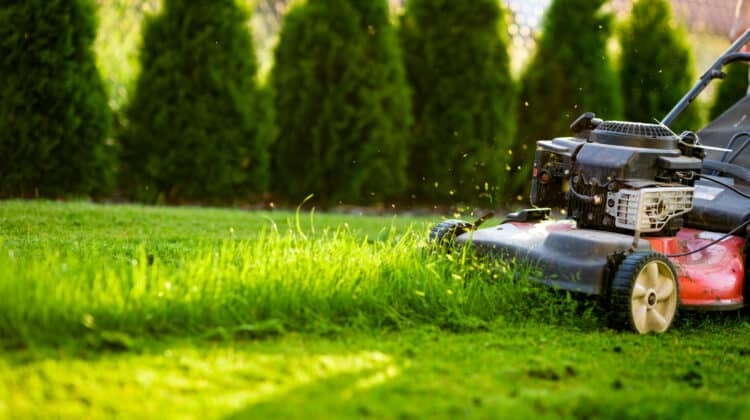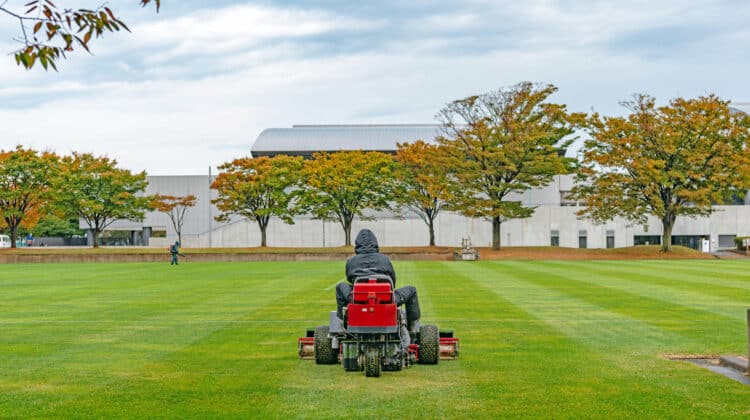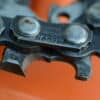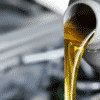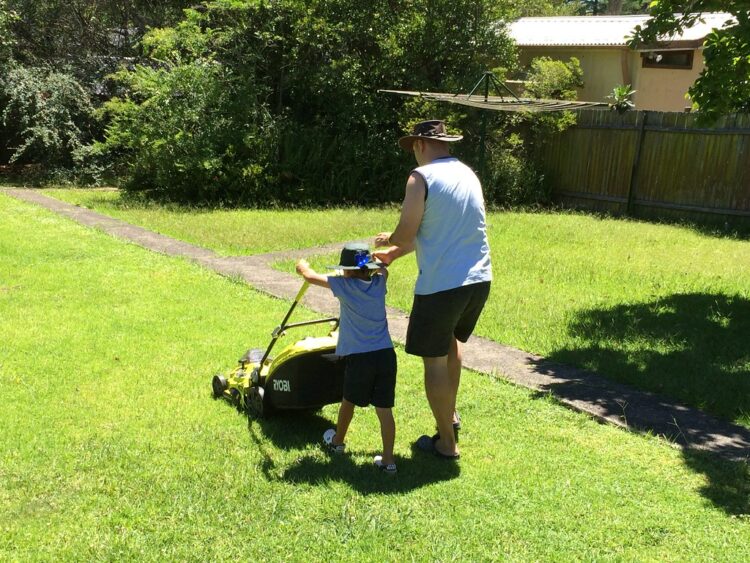
If one of your main household chores is lawn-mowing, this thought should cross your mind once you’re engaging in it: how often should you mow your lawn?
To rephrase it, how often does grass need to be cut? As a frequent lawn trimmer, you already know that keeping it cut in a manageable height enables it to be neat and healthy at the same time.
You would not have to trim it when the climate becomes dormant as you do during active seasons when it grows to its full height. However, the timing is always different by the kind of grass on your lawn.
Maintaining it at the optimum height at all times and making sure you won’t cut too much are the chief factors in keeping it healthy and last a long time.
Table of Contents
Mowing tips in maintaining a healthy lawn
You might think that mowing is simple. But each time you cut it, you are creating a chance in enabling your lawn to either fail or succeed. If you mow the proper way, you will be grooming healthy sod, making it tolerant to drought and will be dense enough to force out weeds.
If you mow it the wrong way, the grass might wither away and die. You will need to cut it in a precise way so that less than one-third of the entire leaf surface of one blade of grass is only removed.
Here are a few tips you can do to be an effective lawn-mowing man/woman:
Don’t scalp
Scalping means you are cutting the grass too short. A yard that has been scalped is weak and unprotected from weed infestation and different grass diseases.
A scalped yard exposes the soil and contributes to the growth and prevalence of weeds. Since it’s exposed, the sun’s rays will reach the weed seedlings and supercharge them to grow abundantly.
If you often scalp your lawn, it will develop a weak root system, which in turn makes it sensitive to high temperatures and drought.
Make the mower blades sharp
When the lawn mowing season arrives, make sure that your mower blades are sharp.
Sharp mower blades will cleanly cut the grass, while a dull one will produce an uneven and jagged appearance. It will create a tear in the sod, opening it to diseases and pesky insects.
A dulled blade-cut lawn will develop into a brown or milky hue due to disease. To avoid this from happening, make sure to sharpen the blades a couple of times during the lawn-mowing season.
Do not mow across stones or tree branches so that the blades won’t get damaged. If you can afford it, buy an additional mower blade and keep it on standby. In case something happens to the current one you’re using.
Make adjustments on the height of the mower
How many times should you mow your lawn? A lot, and doing it with the right mower height.
Throughout the active season, wherein the lawn grass grows taller, you will need to adjust the cutting deck to be a little higher to enable the grass to become longer.
Taller grass assists in shading the soil, which halts the growth of weeds. It also makes water evaporation from the ground become slower.
Also, taller grass germinates its roots to grow deeper into the ground, which enables the entire lawn to withstand drought better.
When autumn is about to end, adjust the cutting deck to become lower during one of the last times you’ll be mowing before the arrival of winter. It will prevent any snow mold from appearing on the lawn.
Grass in the shade
Why do we cut grass? It’s because it is an essential task, benefiting the grass itself and aesthetics in your lawn, including in the shady areas.
Grass growing in the shade gain benefits, unlike the portions facing the sun all day long. It has more area to conduct photosynthesis, and with less sunlight coming in, it will grow to be healthy. So to encourage it, adjust the cutting deck to be a little higher.
Mowing dry grass
Make it a habit to mow your lawn when it is dry. Mowing wet grass is not harmful but does not produce good results.
Whenever the grass is mowed when wet, it will fill up and congest the mower deck. It will also fall forward and bundle together whenever you mow it, thus making the cuts uneven.
So whenever circumstances arise that you have to cut it wet, remove it immediately after mowing, or else it might kill the live grass.
Apply the mower’s underside with silicone spray or oil to keep the grass from sticking. Keep the blades sharp so that no grass-ripping will occur.
Also, if you can avert it from happening, do not mow in damp and muddy soil. It isn’t beneficial for the mower itself and will rip the grass and leave unwanted wheel furrows on the ground.
Mowing in the shade
Pruning a plant will induce strain to it, and the same thing happens to grass. Whenever you mow it, it will create an exceedingly stressful situation. And so much more during very sunny days.
Grass will lose more water and recuperate more slowly if cut in hot weather. Compared to mowing in cooler and shadier parts of the day.
Mow grass in any part of the day where the sun is lower with lots of shade. That way, the grass would lose less water, and recuperation will be faster.
Create edging
Make a flat edging beside your walkway, driveway, or anywhere where the lawn will end. Whenever you mow, the other wheel will roll on this edging. This way, you will not anymore string cut edges.
You can use gravel, bricks, crushed limestone, or concrete pavers to make the edging, which will be placed strategically on the edges of the entire lawn.
Grasscycling
It refers to the action of leaving the grass cuttings on the lawn after mowing. It will save you time in bundling it up and putting it away. Also, it will save you money by not paying fees and garbage bags anymore.
The cuttings make an excellent source of fertilizer for your lawn, which also allows you to save money by not buying fertilizing materials anymore.
To mulch it, you do not have to rent or buy a mulching mower. You can substitute your current blade with a mulching blade. It will mow the grass into smaller pieces to allow quicker decomposition.
There is also a way to grasscycle that doesn’t have to be messy. You can purchase a mower adaptor kit, which has a plug to cover the hole where the grass cuttings usually get out of the mower deck. This way, you won’t be sprayed by the thrusting grass bits.
You can buy a universal mower kit online or from depots that sell mowers.
Clippings for compost
Grasscycling will work well with frequently cut grass, and one-third of its leaf has been removed. Whenever you mow longer grass, you should collect it to become compost.
Mowing in patterns
Whenever you mow, don’t do the same pattern or direction, or else you might compact the soil and make furrows on the ground. It will lead to an unhealthy lawn and the growth of weeds because they will flourish in compact soil.
Mowing on hillsides
Be cautious whenever you mow in a hilly portion, even if it is only small, more so whenever the grass is wet. Doing this will lead to slippage and possible injuries.
If you still intend to mow on a hill, don’t do it going up and down, but one side to the next. A string trimmer also works best in this situation instead of a lawnmower.
Battery-powered mower
If you are looking to buy a mower, the best is the battery-operated kind, which doesn’t emit harmful gas fumes. It is very effective and enough energy to mow an entire lawn.
However, mowing longer or wet grass eats up a lot of energy from the batteries. If you have a massive lawn, you should get an extra battery. Find a model that enables you to take out the battery to be charged. It would be practical if you have another battery for mowing.
It would be beneficial for the mower if you store it in a cool place indoors, like a garage, since most batteries need to be stored in a storage area, without any possibility of heat occurring.
How often should you mow your lawn?
Now you have learned about the many ways to aid you to become a more effective mower. However, from all of these, a new question arises: When should you mow your lawn?
It begins in springtime after your lawn has remained dormant from the winter season. Start mowing it before it becomes green and begins growing, and do it in the highest mower setting.
Cutting off the dead tips will signal the grass to begin to grow. The earlier it gets to start growing, the sooner you can force out the weeds before they become a nuisance.
How often to get the lawn mowed will depend on your availability as someone who has the know-how to mow lawns. The rule is usually weekly, but some yards need cutting more than regular frequency.
It will also matter less how often should you mow your lawn, as much as how high the grass has grown. If you notice that your yard looks dried up and yellow after finishing the task of mowing, you may have set the mower blade to a low position.
Some homeowners like a very short lawn similar to a putting green in a golf course. But getting to that point necessitates a particular kind of grass (lawn grass types will be further explained in later segments) and a lot of extra-special care maintaining and fertilizing it.
One-third rule
You have heard this before in previous segments.
When the lawn is overgrown, it will be tempting to cut it away immediately in one mowing session. However, it will create stress on the grass.
Cutting it too much will sever its food-producing elements, which in turn starves it and changes its coloring to brown. To avoid this from happening, only cut it one-third of the grass blades’ length at a time, even though how long it grows.
If you want to cut more than that, mow it regularly until it reaches your preferred height.
Grass height
Before engaging in the crucial task of yard-cutting, make sure that the grass is tall enough to justify moving it. Too short grass can result in unhealthy and weaker roots that can’t absorb fertilizer and water.
A healthy lawn’s ideal height is about three to three-and-a-half inches, which is the correct tallness to produce a substantial root system. It will also lessen the number of weeds that can grow by not letting too much sunlight reach the weed seeds.
Longer grass also means more area for photosynthesis to develop, which is necessary for producing energy and food for the yard.
Frequency of mowing
How often should grass be cut? As often as possible, which is healthy for your yard. Here are a few reasons:
- The grass in a golf course’s lawn is different from household yards. Gardeners there are usually tasked to mow it every day.
They cut a small portion at a time and still manages to remain healthy. And also constantly water and fertilize it so it can grow to a thick and lustrous green. - Mulching is a good way to make your lawn healthier. To make it is to simply leave the cuttings on the lawn, which then becomes mulch.
You can make mulching easier by fastening a mulcher to your mower and remove the bag. Mowing more often provides ideal mulch for your lawn, rather than longer strands, which won’t make good mulching materials. - The ideal mowing frequency for residential grasses is two times a week.
Best kinds of grass for your lawn
You have learned about how often you should mow your lawn. Now you will know about the different types of grass that would make your ordinary-looking yard to be an excellent one.
However, before sodding or seeding your yard, give careful consideration to the climate in your area since the temperature will be a crucial factor.
If you live in the USA, you have to find out if you are situated in the South, North, or the transitional zone.
These are the states that lie within the areas that have lower elevation like North Carolina, Virginia, and westward through Kentucky, West Virginia, Arkansas, and Tennessee, including Kansas, Illinois, Missouri, Southern Ohio, and Indiana. You can select from these excellent grass:
South
- St. Augustine grass- This type is ideal for planting in Florida and Texas and can withstand droughts and extreme heat. It has wide-looking blades of grass and is tough, rough, and can grow in sandy soil.
- Centipede grass- If you are looking for low-maintenance grass, this type might be the one you want. It grows low and short and can tolerate pests. It can grow in the acidic ground, and mostly found in Mississippi, Louisiana, North and South Carolina.
North
- Kentucky bluegrass- This grass type is ideal for moderate and cool temperatures. It is capable of withstanding heavy foot traffic, durable, and can quickly repair itself.
- Perennial ryegrass- It is a popular option if you want to blend various types. It’s because it can resist heavy foot traffic and can quickly grow despite that. Also, it can be seeded and grow on its own.
- Fine fescue- This type favors growth in shaded areas, which makes it ideal to be planted underneath trees. It cannot stand firm with foot traffic as the abovementioned grass has, but it can adapt and grow in different soils that others couldn’t.
- Tall fescue- This kind can withstand times of drought due to its deep roots and can still grow in very hot regions. It can also do well in transition zones or areas that don’t rain often.
Transition zone
- Tall fescue- Same reason as above.
- Zoysia grass- This type favors full sunshine and grows to be thick, which makes it ideal and mostly utilized in golf courses.
- Bermuda grass- This type is very versatile and works well in warm climates, and can also tolerate cold weather. It is prevalent in California and areas in the South.
Ideal heights
- Bent grass- one-fourth to one inch
- Buffalo, Bahia, tall fescue, and blue grama grass- two to three inches
- Centipede and zoysia grass- one to two inches
- Common Bermuda grass- three-fourths to one-and-one-half inches
- Hybrid Bermuda grass- one-half to one inch
- Ryegrass, perennial, and annual grass- one and one-half to two inches
- Kentucky bluegrass- one and one-third to two and one-half inches
- St. Augustine and fine fescue grass- one and one-half to two and one-half inches
Managing your lawn through the different seasons
How often do you mow your lawn? With each season’s arrival, there are various practices and different mowing frequencies. To get the best performance out of your lawn, it is crucial to apply the proper management procedures at the right times of the year.
Seeding
During late summer to early autumn is the best period for seeding a new lawn. It will successfully grow at this period, because of weaker challenges from weeds and has fall and spring to develop. Seeding is not recommended later than mid-October for places in Pennsylvania.
Over-seeding
The task of spreading seeds to your current is best done in early fall, winter or spring. It must be properly dispersed and reach the soil so it can germinate.
Sodding
You can lay down sod any time of the year if your lawn is properly irrigated. But if you set it up in a dry and hot climate, it will need a lot of water, and it will take more time to develop.
Fertilization
Grass needs phosphorous, nitrogen, and potassium in large quantities that can be provided from soil content. In many situations, grass will benefit from yearly applications of fertilizer, specifically nitrogen.
It is best to fertilize your lawn in the mid to late springtime and/or late summer or early autumn. Before application, check first the manufacturer’s recommended application.
Liming
Most grass types favor a pH scale in their soil that ranges from 6.0 to 7.0 pH. If the soil is too acidic, lime must be applied following the recommendation from a soil test.
Lime application in fall is recommended because the following winter season wherein freezing and thawing conditions will assist in adhering the lime into the soil.
Dethatching
Thatch is a mixture of partly decaying grass roots and stems that germinate between the top lawn and soil. It halts the development of the entire pard by limiting the passage of water, nutrients, pesticides, and even air into the ground.
It can be removed by a dethatcher or lawn scarifier. Its simplest form looks like a rake, which you can use to dethatch your lawn.
There is also a mechanical dethatcher, which is much easier to utilize.
Don’t remove it in times of drought, high temperatures, or late fall when the soil will dry up. Dethatch only when its buildup becomes too much.
Weed, disease, and insect control
You can manage the growth of weeds in your lawn by developing a thick and well-managed yard. If this is still lacking, there are herbicides. These should be applied before weed germination in early spring.
Grass diseases can happen any time of the year but can occur often if the soil has too much water. If it happens to your lawn, find a way to get a correct diagnosis. That way can still control it.
Insects appear in late springtime to early autumn. The most deadly are Japanese beetle larvas and chinch bugs.
You can apply effective insecticides that have pyrethroid compounds for the chinch bugs and trichlorfon or carbaryl for the Japanese beetles. These are effective in killing them.
Conclusion
Now you know everything about lawn management, especially the frequency of mowing your lawn. With proper knowledge and the best of intentions, you can produce an excellent front yard that you can be proud of.
